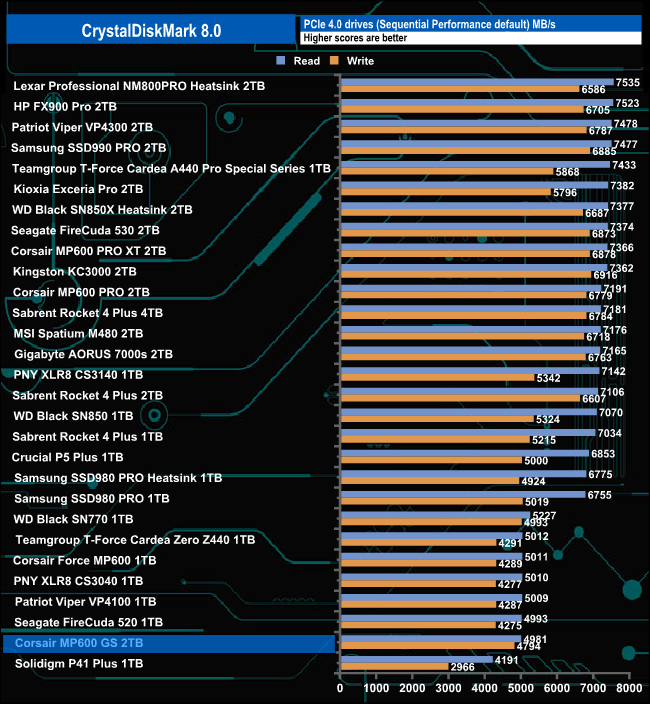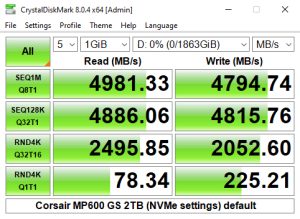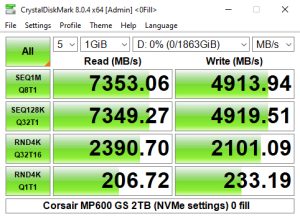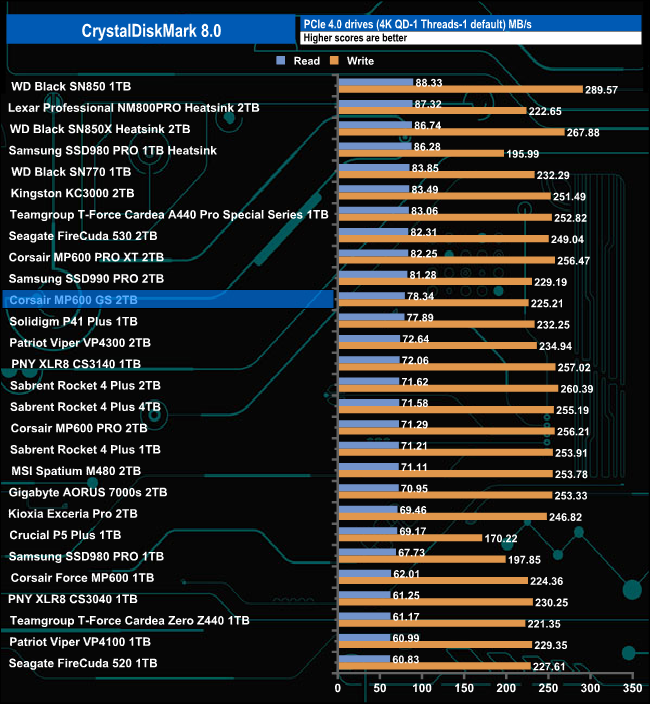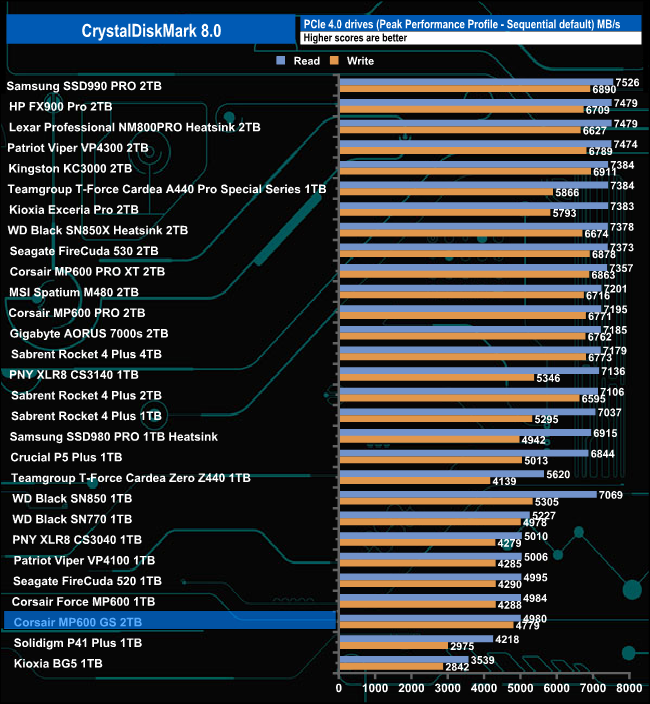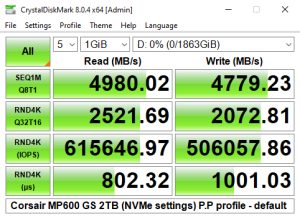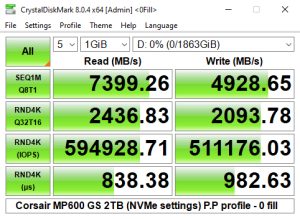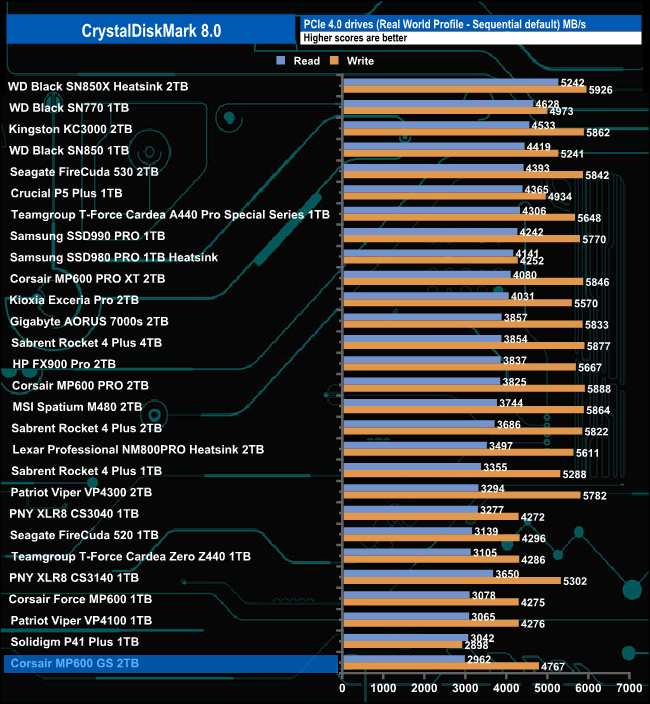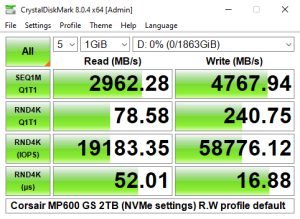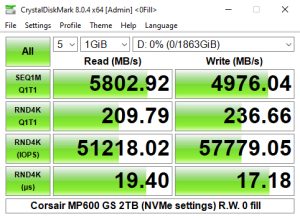CrystalDiskMark is a useful benchmark to measure the theoretical performance levels of hard drives and SSDs. We are using v8.0.
Corsair rate the Sequential performance of the 2TB MP600 GS as up to 4,800MB/s for reads and up to 4,500MB/s for writes. Using the default CrystalDiskMark 8 test we could not only confirm those figures but we coaxed a bit more out of the drive with test results of 4,981MB/s for reads and 4,794MB/s for writes.
Swapping over to using highly compressible data (0 fill) showed much better performance gains for reads than writes.
In the 4K QD1 1 thread default test, the drive produced a read figure of 78.34MB/s, which put it just outside the top 10 consumer drives we've tested to date. The write score of 225.21MB/s wasn't quite as impressive.
Peak Performance Profile
Switching over to the CrystalDiskMark 8's Peak Performance testing profile we could once again confirm the official Sequential read/write speeds with test results of 4,980MB/s and 4,779MB/s respectively. Corsair rate the 2TB MP600 GS as up to 530K IOPS and 1000K IOPS for reads and writes respectively. The Peak Performance testing profile displays 4K random performance in IOPS. At 615,646.97 IOPS we actually bettered the official read maximum by quite a margin but on the other hand, at 506,057 IOPS we were nowhere close to the official write maximum of 1,000K IOPS.
The Corsair MP600 GS random read figure sees the drive in the bottom half of the table.
Real World Profile
Using the default Real World profile, the drive produced a 2,962MB/s read figure with a much better write performance score of 4,767MB/s but it's the slowest Gen 4 drive we've seen to date in this test. Switching over to highly compressible saw the read performance of the drive vastly improve in the test.
 KitGuru KitGuru.net – Tech News | Hardware News | Hardware Reviews | IOS | Mobile | Gaming | Graphics Cards
KitGuru KitGuru.net – Tech News | Hardware News | Hardware Reviews | IOS | Mobile | Gaming | Graphics Cards


